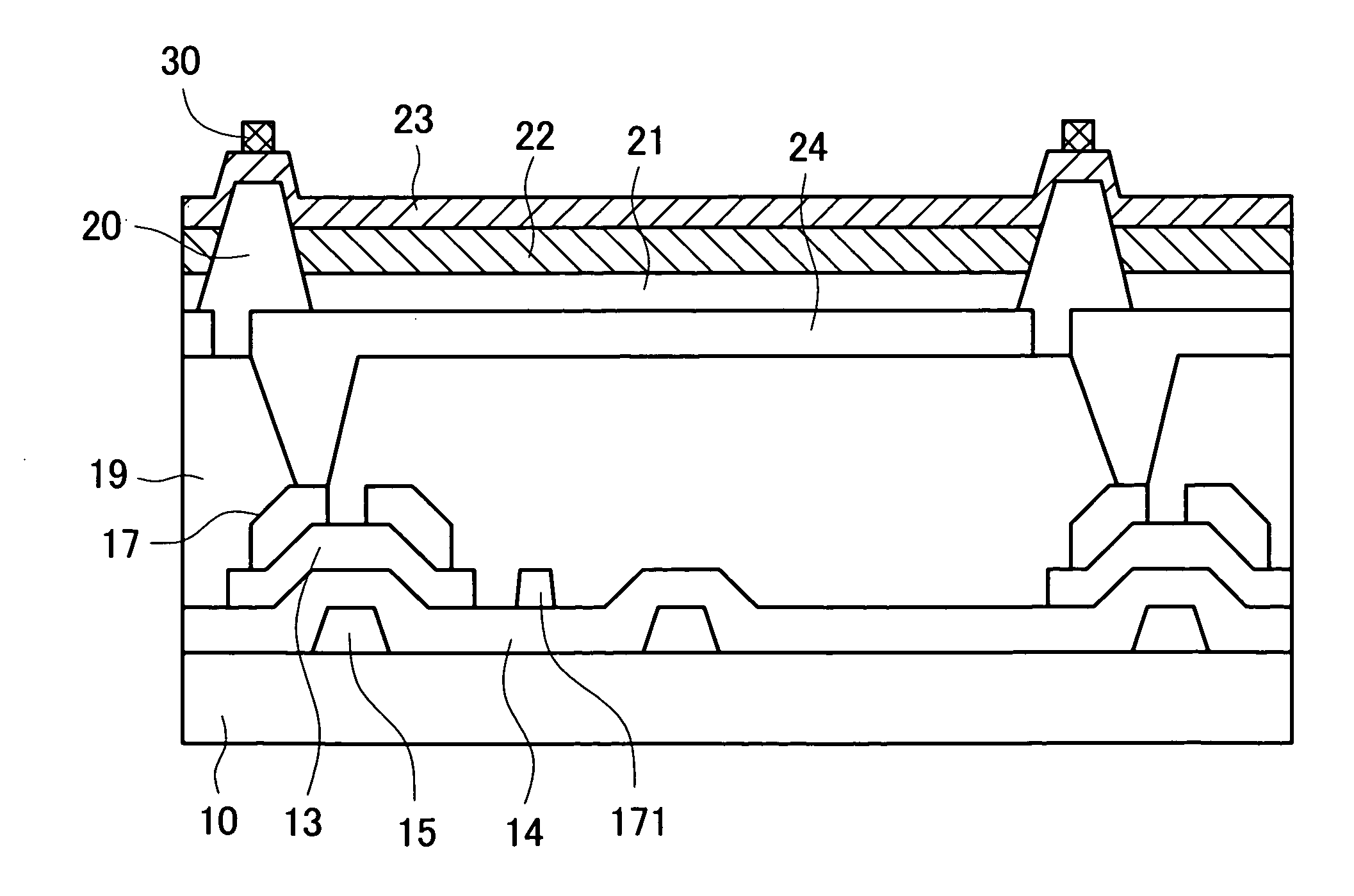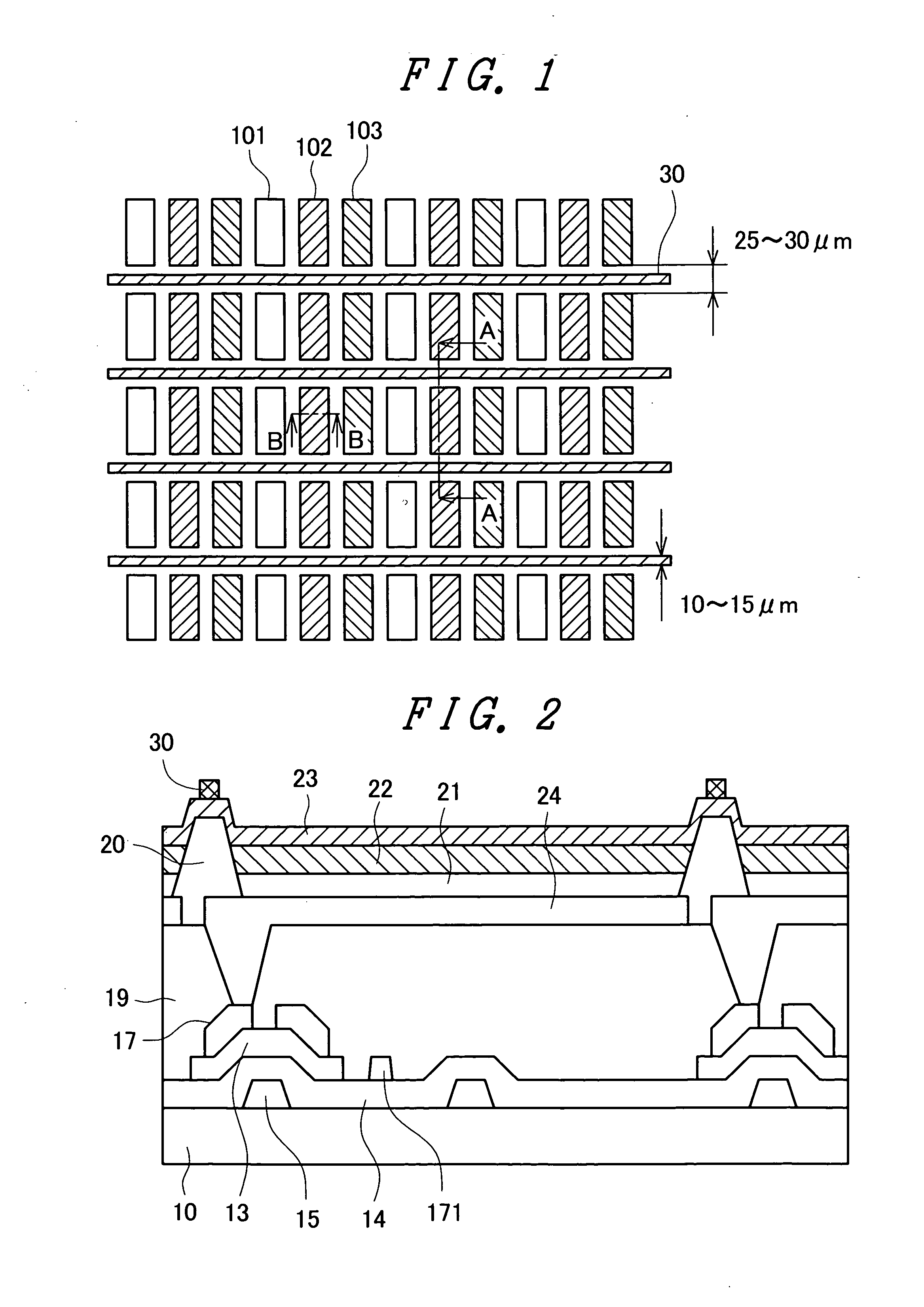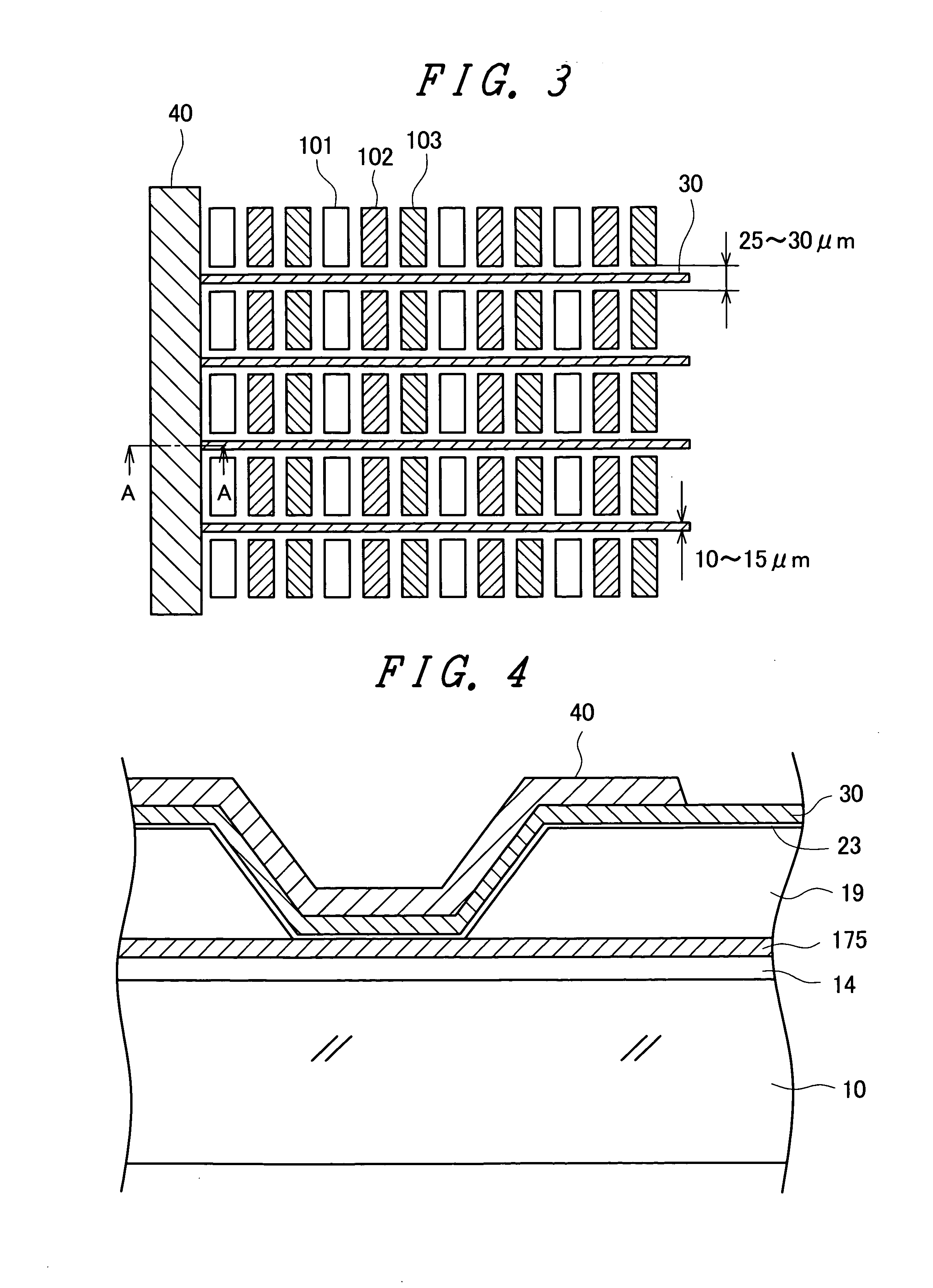Organic electro-luminescent display device
a display device and electroluminescent technology, applied in the manufacture of electrode systems, electric discharge tubes/lamps, discharge tubes luminescnet screens, etc., can solve the problems of affecting the quality of light, so as to enhance the reliability of light, prevent the occurrence of conduction failure, and improve the effect of brightness
- Summary
- Abstract
- Description
- Claims
- Application Information
AI Technical Summary
Benefits of technology
Problems solved by technology
Method used
Image
Examples
embodiment 1
[0039]FIG. 1 is a plan view of a display region of a top-emission-type organic EL display device according to the present invention. FIG. 2 is across-sectional view taken along a line A-A in FIG. 1. In FIG. 1, a red pixel 101, a green pixel 102 and a blue pixel 103 are arranged sequentially in the lateral direction. The pixels having the same color are arranged in the longitudinal direction. Each pixel includes an organic EL layer 22 which emits color of red, green or blue. Each organic EL layer 22 is covered with an IZO film which constitutes a transparent electrode forming an upper electrode 23. The transparent electrode may be also formed of an ITO film or the like besides the IZO film.
[0040]An auxiliary electrode 30 extends in the lateral direction between the pixels and the pixels arranged in the longitudinal direction. The auxiliary electrode 30 is formed on the upper electrode 23 formed in a matted manner by mask vapor deposition. In the present invention, the auxiliary elect...
embodiment 2
[0061]The present invention is, so long as the organic EL display device is the top-emission-type organic EL display device, applicable to irrespective of whether the organic EL layer 22 is of a top anode type or of a top cathode type and irrespective of whether the TFT is of a bottom gate type or of a top gate type. This embodiment is an example in which the present invention is applied to the case where the TFT is of a top gate type and the organic EL layer 22 is of a top anode type. FIG. 6 is a cross-sectional view of a pixel portion of this embodiment. FIG. 6 corresponds to a cross-sectional view taken along a line B-B in FIG. 1.
[0062]In FIG. 6, a first background film 11 made of SiN and a second background film 12 made of SiO2 are formed on an element substrate 10. These background films 11, 12 are provided for preventing impurities from a glass substrate from contaminating a semiconductor layer 13. The semiconductor layer 13 is formed on the second back ground film 12. With re...
embodiment 3
[0074]In the embodiment 1 and the embodiment 2, the supply of the electric current to the auxiliary electrodes 30 is collectively performed by providing a bus-like contact electrode 40 outside the display region in the lateral direction. The present invention is not limited to such cases, and is also applicable to a case in which the current supply line 175 and the auxiliary electrodes 30 are connected with each other within the display region. FIG. 8 is a plan view of the display region of this embodiment.
[0075]In FIG. 8, the pixels are arranged in the same manner as the pixels shown in FIG. 1. Further, the auxiliary electrodes 30 extend in the lateral direction on the screen in the same manner as the auxiliary electrodes 30 shown in FIG. 1. The embodiment 3 shown in FIG. 8 differs form the embodiment 1 shown in FIG. 1 with respect to a point that the contact of the auxiliary electrodes 30 and the current supply line is arranged within the display region. In FIG. 8, the contact por...
PUM
 Login to View More
Login to View More Abstract
Description
Claims
Application Information
 Login to View More
Login to View More - R&D
- Intellectual Property
- Life Sciences
- Materials
- Tech Scout
- Unparalleled Data Quality
- Higher Quality Content
- 60% Fewer Hallucinations
Browse by: Latest US Patents, China's latest patents, Technical Efficacy Thesaurus, Application Domain, Technology Topic, Popular Technical Reports.
© 2025 PatSnap. All rights reserved.Legal|Privacy policy|Modern Slavery Act Transparency Statement|Sitemap|About US| Contact US: help@patsnap.com



